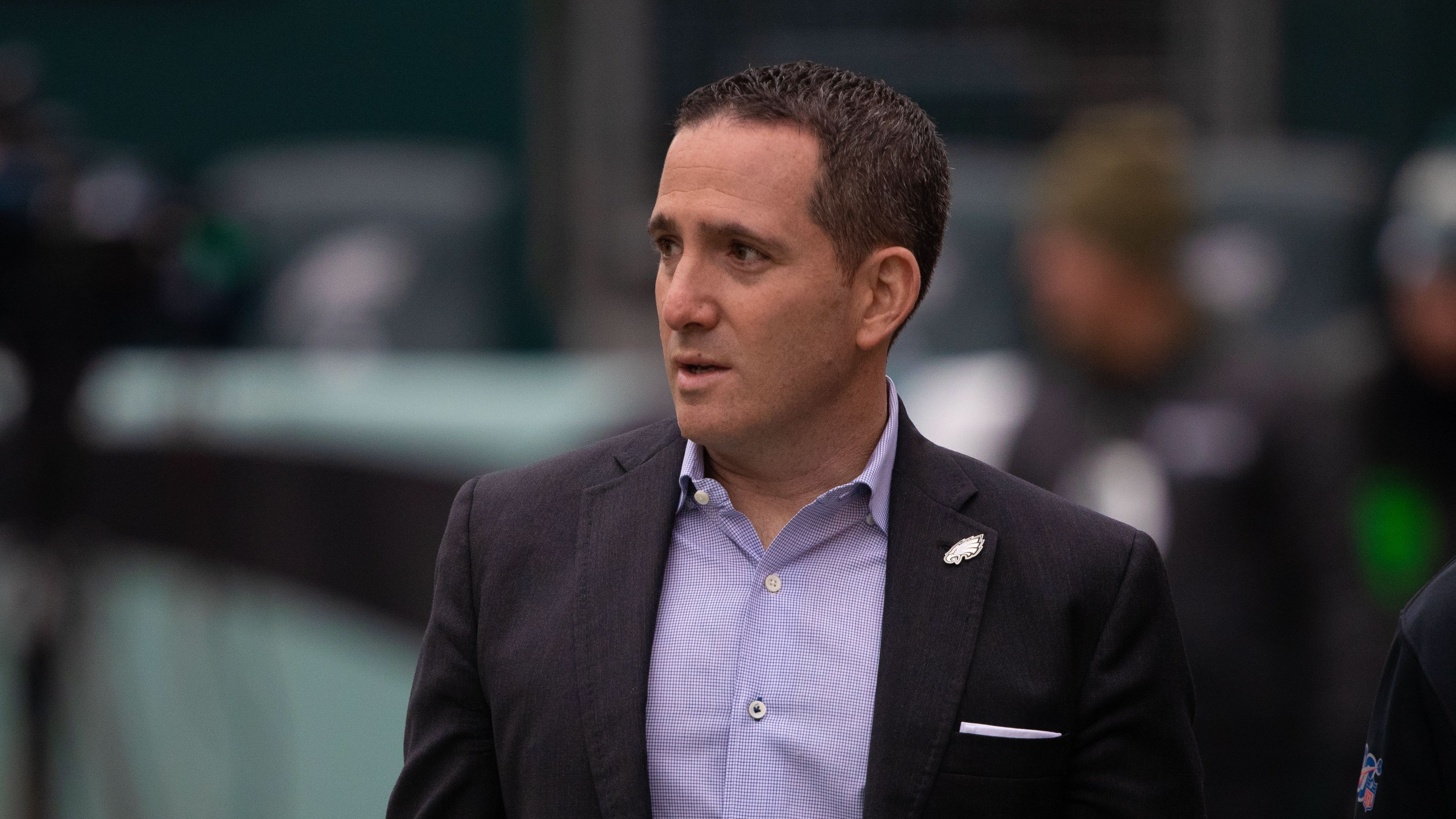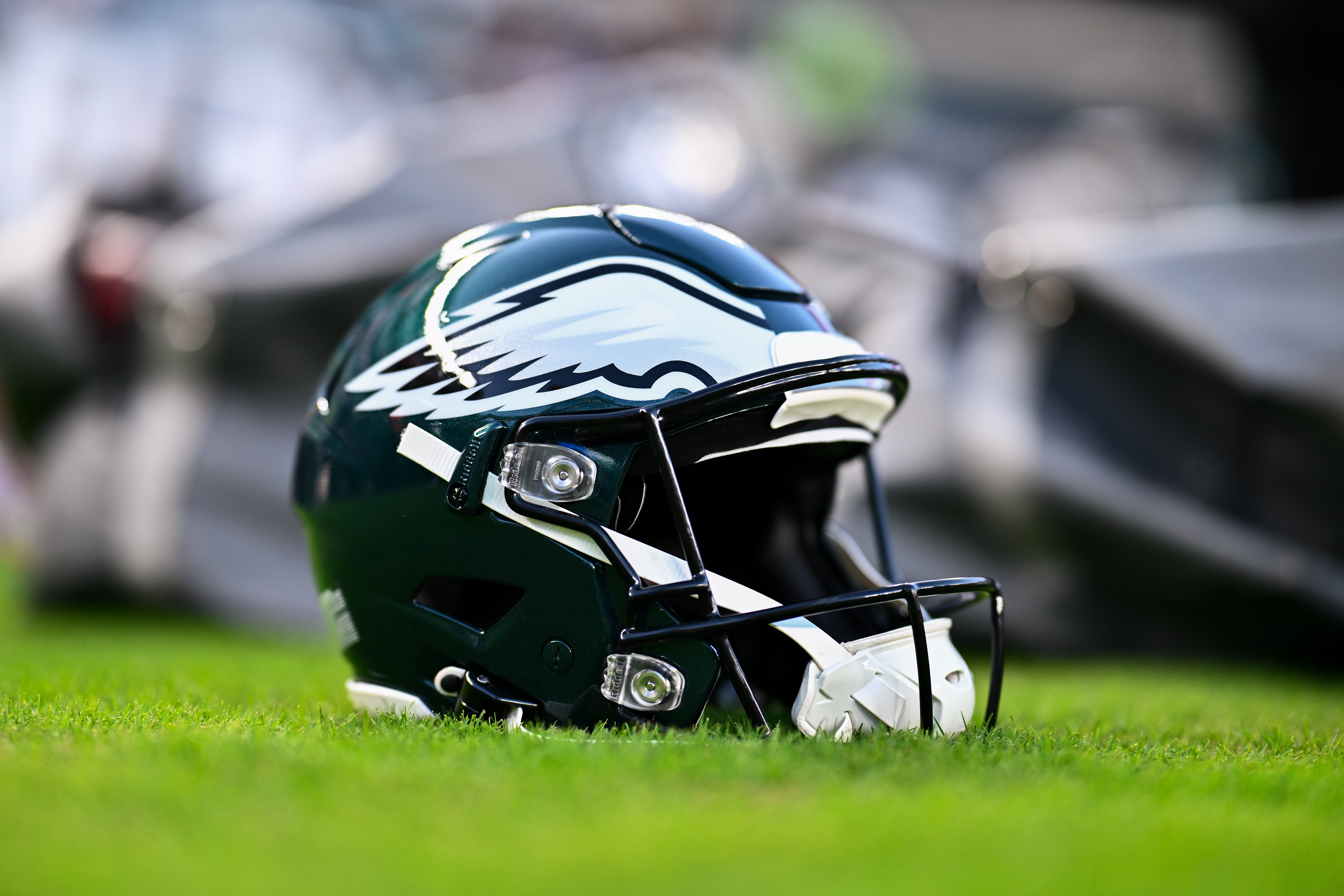This week's Eagles Film Review is going to be a little different. Normally, we show you something that reveals itself in the coaches tape, and still will. The difference this time is we can't necessarily show you why Carson Wentz wasn't throwing deep against the Cowboys on Sunday, because by and large, he wasn't even given the chance.
The biggest takeaway from watching all 47 of Wentz's dropbacks in the Eagles' 29-23 loss is how few of those calls even had a shot at stretching the field.
There were 19 attempts marked as "quick passes" — throws under 10 yards that generally went to the first read — eight of which were slant patterns. Another nine attempts were wide receiver or running back screens, and six more more were checkdown passes. After everything was said and done, Wentz threw just seven passes over 10 yards in the air.
That tells only part of the story. The Eagles had just nine plays the entire game where at least one route was run 20 yards down the field, either by design or because the ball was out of Wentz's hand before it could develop. Even if we account for the 11 dropbacks inside the red zone, that's still just nine out 36 passing plays that even threatened the Cowboys deep, or one in four.
And while nine plays might seem like enough for Wentz to turn it loose at some point, even just once, that's not accounting for the coverage, the pass-rush or the situation. Quite a few of those opportunities came while Wentz was leading a scoring drive with less than two minutes in the first half and during a touchdown drive in the third quarter. Can't complain about those results.
Nonetheless, those two series make up most of the good examples that we have where the Eagles had a receiver of any kind operating 20 yards down the field. We'll take a look at them, but they're probably about what you would expect.
Philadelphia Eagles
Complete coverage of the Philadelphia Eagles and their NFL rivals from NBC Sports Philadelphia.
Unavailable.
This is 1st-and-10 from the Eagles' 25-yard line in the second quarter and one of the first times all game the offense considers pushing the ball downfield. The Cowboys' zone concept employed by the cornerback and safety has the crossing pattern well covered though, and Wentz wisely dumps the ball down to Ryan Mathews rather than force the issue.
It's not that the Cowboys' zone look was unbeatable. Here we see a similar combination and defensive scheme on 2nd-and-10 from the Dallas 22, and this time the cornerback trails the receiver toward the middle of the field. Tight end Zach Ertz might find some empty space running toward the corner of the end zone here.
Except take a closer look at the pocket. Feeling the pressure close in on his blind side, Wentz isn't comfortable waiting for the routes to develop, so he checks it down to Darren Sproles for a gain of four.
And it's difficult to argue with the decision, quite honestly. Maybe if he waits it's a touchdown to Ertz, maybe it's a sack. By taking the safe way out, the Eagles lived to fight another day and wound up getting six a few plays later anyway.
Well what about straight-up fly routes?
Normally, the Cowboys have at least one safety over the top.
This is 2nd-and-6 from the Eagles' 37-yard line, and there's only 36 seconds remaining in the first half — an ideal time to pick up a huge chunk of ground. The offense is going to attack the seam, but with a single-high safety patrolling deep center field in addition to man-to-man coverage, there's not much to assess. Nelson Agholor is open at the bottom of the screen, and the wideout's seven-yard gain is good for a first down. The Eagles would get three on the drive, by the way.
Once again, the Cowboys have a single-high safety on 1st-and-10 from the Cowboys' 45 as the third quarter is coming to an end, only this time the coverage is shaded to the side of the vertical. It's a good route combination actually, because the safety must respect the deep route and can't come crashing down on Ertz crossing over the middle. He'll pick up 11 and the first down.
But the moral of the story is the same: The deep route is nothing more than a decoy here. Even if it turns into a one-on-one, will it even be open?
Good question. There was roughly one decent example of a one-on-one route going 20 yards down the field this entire game. You judge whether the opportunity is there.
Third quarter, 2nd-and-6, and full disclosure, this is the same touchdown drive as earlier. Yet here we are, looking at a receiver in one-on-one coverage, no safety in sight, and the receiver Wentz ultimately does target, Dorial Green-Beckham, in tight coverage down the sideline.
Of course, Green-Beckham is going to break in and beat his man for a 14-yard gain. And that receiver going deep? The defensive back is in lockstep with him. There's no move here, unlike with DGB. If it's not open now, why would it be 20, 30 yards down the field? Not like anybody on this team has shown themselves consistently capable of making a tough catch either.
We may have just found the one shot all game Wentz could've taken and it wasn't open.
Of course, just because Eagles receivers have trouble getting open or capitalizing on attempts down the field isn't an excuse to stop trying. The fact that only 25 percent of the offense's plays even gave Wentz the option to throw long is an issue. Defenses may not respect these players, but at this rate, they won't have to respect the possibility the quarterback might hit them over the top.
It's not like all of the short stuff is working anyway. Wentz completed 15 of 19 "quick passes" for 107 yards and 6 of 9 screens for 17 yards for an average of 4.4 yards per attempt. That would be just half decent for a running back, let alone in the passing game.
But it's by design to some extent too, and it's not really Wentz's fault. If the Eagles don't unshackle him, it's not going to get any better regardless of bad receivers or rookie mistakes. Simply put, the offense needs to be willing to take chances, and it all starts with the game plan and coaching.








